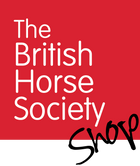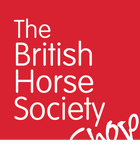Every horse person strives to grow in ability and understanding over time whether in the saddle, on the ground, or in the stable; whether in ways that are small or those that are significant. This effort, when done right, lasts a lifetime, and along the way requires the addition of knowledge and experience gleaned from numerous others. Where does one find leadership within the equine industry? How does one know to whom to turn for information? Does riding require an instructor, a trainer, a coach? Can you get by with part-time guidance? Can you effectively learn on your own, with just the occasional directive, and still find personal or competitive success?With this book, renowned clinician and international team coach Eric Smiley intends to fill the gap when it comes to these questions and others, providing a reliable resource and educational companion for any aspiring equestrian. Smiley addresses fundamental topics pertinent to riders, with philosophical discussion and practical exercises applicable to all levels. Along the way he strives to educate them on being taught, and perhaps, one day, becoming the teachers.His aim is to bring together the mind of the rider with the mind of the horse, while highlighting the key component in their synergy: understanding. How that understanding is acquired, retained, and put to use is the key to success.
This book is the closest most of us will come to spending an extended period of time in the Klimke stable.Ingrid Klimke details her personal programme of bringing a horse along through the stages of progressive development and, in doing so, explains her training philosophy. She provides guidelines and exercise to ensure success without stress at each milestone.It's a wonderful insight into how Klimke customises the work to suit the individual horse. The result is surely a joyful partnership between rider and horse that will go the distance.
Every horse person strives to grow in ability and understanding over time whether in the saddle, on the ground, or in the stable; whether in ways that are small or those that are significant. This effort, when done right, lasts a lifetime, and along the way requires the addition of knowledge and experience gleaned from numerous others. Where does one find leadership within the equine industry? How does one know to whom to turn for information? Does riding require an instructor, a trainer, a coach? Can you get by with part-time guidance? Can you effectively learn on your own, with just the occasional directive, and still find personal or competitive success?With this book, renowned clinician and international team coach Eric Smiley intends to fill the gap when it comes to these questions and others, providing a reliable resource and educational companion for any aspiring equestrian. Smiley addresses fundamental topics pertinent to riders, with philosophical discussion and practical exercises applicable to all levels. Along the way he strives to educate them on being taught, and perhaps, one day, becoming the teachers.His aim is to bring together the mind of the rider with the mind of the horse, while highlighting the key component in their synergy: understanding. How that understanding is acquired, retained, and put to use is the key to success.
An easy-to-implement framework proven to grow rider confidence, tested by the world’s leading equestrian athletes.
Without confidence, achievement in competition is unattainable. When confidence is lacking in any sport, equestrian included, chances are your career will be short. Renowned performance coach John Haime has written the book to counter this challenge, providing the mental tools riders need to be better under pressure of all kinds and consistently succeed.
Haime invites readers to dive into three clear and informative areas of exploration:
Throughout, those who have reached the highest levels on horseback in a number of disciplines share their stories, including Michael Jung, Beezie Madden, McLain Ward, Laura Tomlinson, Harry Meade, Oliver Townend, and Beth Underhill. These Olympians, champions, and medallists explain what they do in the saddle and how their techniques for performing under world-class pressure might help other riders develop a similar kind of confidence.
Perhaps even more valuable are the struggles these top competitors share, giving readers the rare opportunity to see how even “the best of the best” are human, too. The way riders develop confidence in their equestrian lives is transferable to everything they do: a confident rider can be a confident businessperson, confident worker, confident spouse, confident parent, and confident friend. In this way, Ride Big!™ instills a skill of worth and promise that extends far beyond the show ring.







